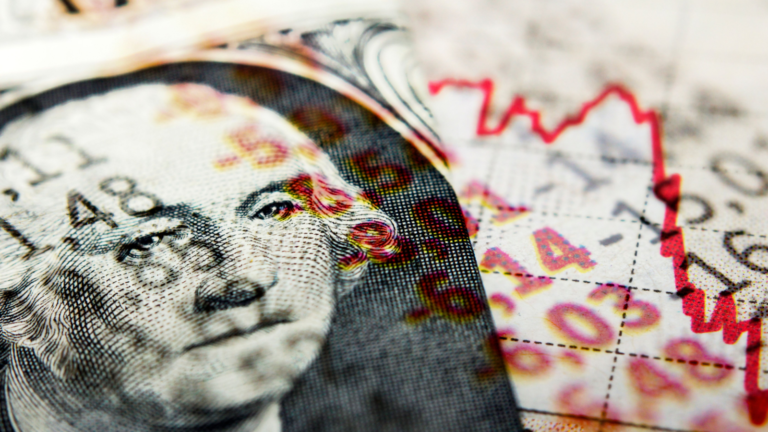Stock market crash fears are rising ahead of next week’s all-important Federal Reserve rate-hike decision. All the economic data from the past several weeks has been seemingly in anticipation of Wednesday’s Federal Open Market Committee Meeting (FOMC). What should you expect from the central bank this time around, and what does that mean for stocks?
Current projections have the Fed passing a 25 basis-point rate hike, the ninth interest rate increase since the central bank began its monetary tightening. This should bring the federal funds rate to a target range of 5%-5.25%, the highest since 2006.
While the notion of another rate hike doesn’t exactly instill joy in most market operators, predictions of a 25 bp rate hike are actually conservative compared to previous estimates of a heftier, 50 bp increase. It seems evidence of economic blowback, namely, the SVB banking crisis, has inched the Fed towards a slightly gentler monetary response. Indeed, as much as Fed Chair Jerome Powell loves to warn of more rate hikes to come, the notion of interest rate-induced economic deterioration has made some analysts predict a mild slowdown from the Fed.
“I think they do indeed hike 25 bps next week,” said Jefferies’ Analyst Thomas Simmons. He continued:
“They need to keep up the fight on inflation to maintain credibility, and a pause here at these levels isn’t going to stop the bleeding in the markets… They’d also risk sending a signal to the market that the macroeconomic impact of these microeconomic phenomena is worse than we think.”
Stock Market Crash Sell-off Starts Early Ahead of Wednesday Rate Hike
Despite the central bank’s efforts so far, demand has remained relatively steadfast. Consumer spending, jobs, and, yes, inflation have all been slow to change even after nine rate hikes so far this cycle.
Indeed, as per this week’s February jobs report, the U.S. economy added 311,000 jobs in the second month of the year. That’s 100,000 more than had been projected. This represents a 3.6% unemployment rate, historically low but a mild deterioration from January’s 3.4% rate, the lowest level in over 50 years.
Consumer spending is also questionably strong. Per the January Consumer Spending report, released Feb. 28, personal consumption expenditures increased by 1.8% in January, a somewhat troubling sign given the Fed’s agenda.
That isn’t to say all was lost this week. Tuesday’s Consumer Price Index report showed 6% year-over-year inflation, largely off the back cooling food prices. Not only is this with consensus estimates, but it’s also a mild improvement from January’s 6.4% level. Now, this is a far cry from the Fed’s long-stated 2% goal, but an improvement, nonetheless.
“Most people are going to be encouraged to see the number continue to trend down,” said Emily Reasor, Senior Partner at McKinsey. “This is going to still take a while to return to numbers that we’re all comfortable with. We’re going to have, certainly this year, to still deal with higher inflation numbers than most consumers are comfortable with or used to.”
What should you expect from the stock market on Wednesday?
Will Stocks Sink on a 25 bp Rate Hike?
At this point, the markets have already largely priced in a 25 bp interest rate increase. As such, a rate hike alone will unlikely be enough to spur stocks lower. A 50 bp hike, or more hawkish comments from Fed Chair Jerome Powell, would likely be enough to push traders toward the bears. In that regard, Powell has rarely hesitated to point expectations to more rate hikes.
“The latest economic data have come in stronger than expected, which suggests that the ultimate level of interest rates is likely to be higher than previously anticipated,” Powell told the Senate Banking Committee last week.
Stocks are already showing signs of weakness before next week’s FOMC meeting. Indeed, today the S&P 500 and Dow Jones are down 1.18% and 1.35%, respectively. Reasonably so, after the past week of economic data, evidence for a hawkish Fed has never been stronger.
At the end of the day, the Fed’s goal is to lower demand enough to lower prices. In that regard, it’s unclear if the demand destruction currently being digested by the economy is enough to sufficiently lower prices.
Unemployment needs to rise for prices to fall to acceptable levels. The question remains whether the Fed can ease prices and raise unemployment without sparking a recession or stock market crash.
“I think, at a minimum, it is one more thing to create a cloudy consumer outlook or just general discomfort with what we’ve got ahead of us this year,” said Reasor.
On the date of publication, Shrey Dua did not hold (either directly or indirectly) any positions in the securities mentioned in this article. The opinions expressed in this article are those of the writer, subject to the InvestorPlace.com Publishing Guidelines.

